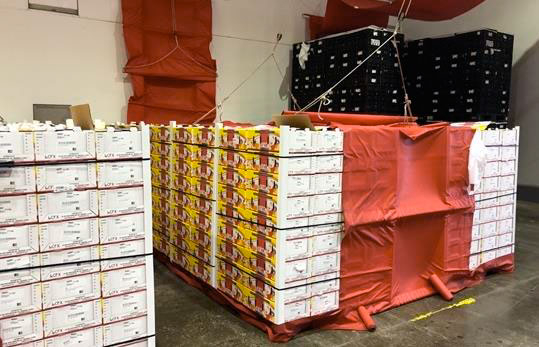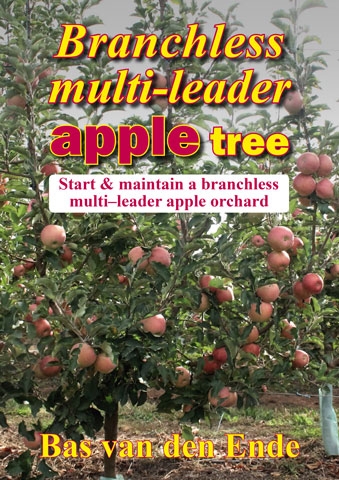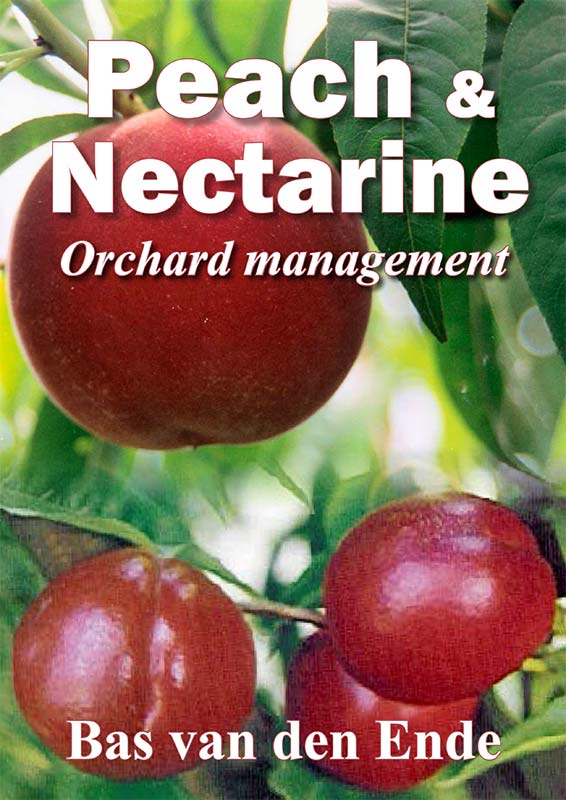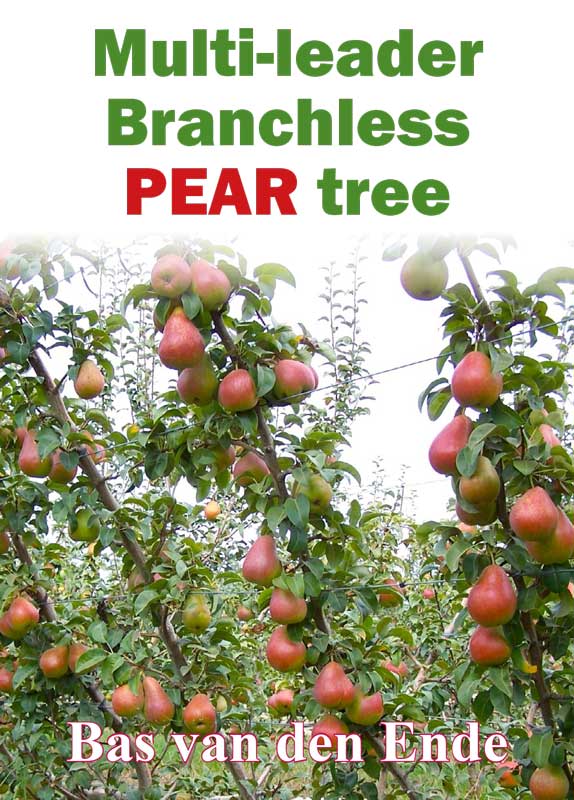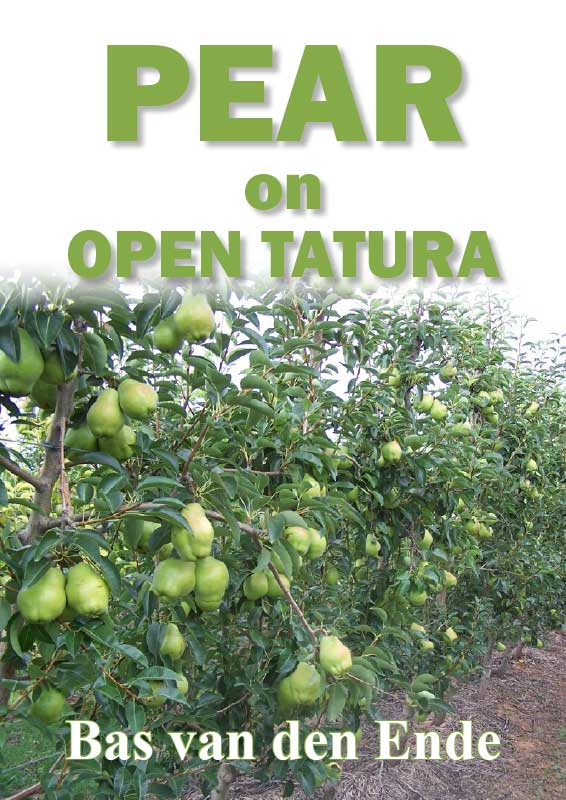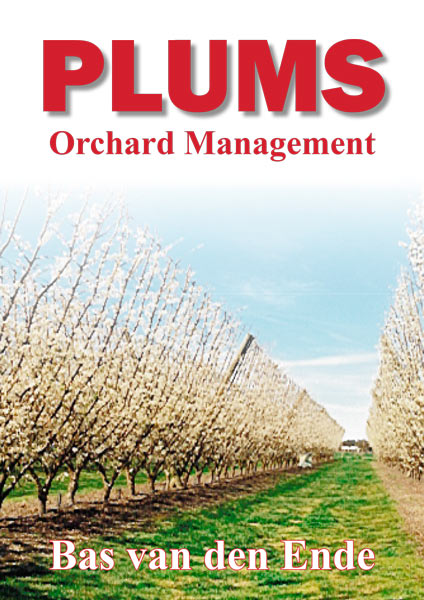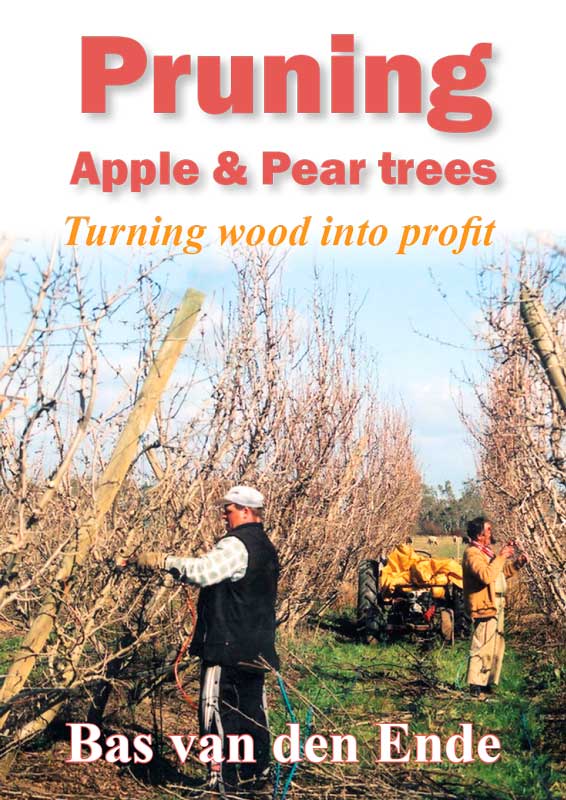Forced air cooling (FA): FA cooling, also known as pressure cooling, is a post-packing process in which chilled air in a cool room is sucked through vent holes in the sides of palletised boxes.
(cont from last issue)
FA cooling systems vary depending on produce being cooled, floor space, and produce packaging but the most common system found in cherry pack houses is tunnel-style.
A standard tunnel cooling system will consist of two rows of palletised produce stacked against the cool room wall. Built into the wall between the rows is a large suction fan. The top of the aisle created between the two rows of pallets, and the end opposite the fan are sealed by tarps.
Once this fan is turned on, negative pressure is created in the aisle between the pallets. Cold air in the cool room must then travel through the side box vents and around individual cherries to reach the low-pressure area in the aisle (Figure 1). Once it has been sucked through the pallets, this warmed air will be cooled with a refrigeration unit and recycled back into the cool room.
When cooling any produce, it is important to keep the concept of 7/8 cooling in mind. This concept refers to the amount of time required to remove seven eighths of the temperature difference between the temperature of produce, and the temperature of the cooling medium, in most cases refrigerated air chilled to 0C.
Regardless of the cooling method (FA, hydrocooling, passive room cooling), produce cools quickly at first then slowly over time. 7/8 cooling aims to bring the fruit pulp temperature as close as possible to optimum storage conditions, while avoiding the excessive cost and time of fully chilling cherries to the temperature of the cooling medium.
In theory, ¾ cooling time is twice the ½ cooling time and 7/8 cooling time is three times the ½ cooling time. This is almost never completely true as storage temperatures generally fluctuate. The cooling curve however is a useful tool to predict when produce will reach a certain temperature.
For example, should cherries with a pulp temperature of 6C and a cooling medium of 0C take two hours to reach ½ cool temperature of 3C, it can be extrapolated that a pulp temperature of roughly 0.75C can be achieved after a further four hours.
All FA cooling systems are most effective when operating in a dedicated cool room, separated from the temperature fluctuations of doors opening and closing and new batches of warmer produce arriving.
(cont next issue)
See this article in Tree Fruit April 2022


